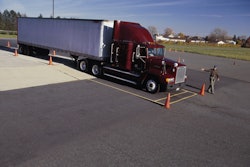As the U.S. continues its transition to domestic energy and power, Renewable Natural Gas (“RNG”) delivers by providing both economic and environmental benefits.
With origins in organic waste and compatibility with existing infrastructure, RNG is a scalable, domestic, cost-effective solution that can improve how American trucks transport our goods.
What is RNG?
Many forms of waste naturally produce methane, the main component of natural gas, as they decompose. When methane is released into the atmosphere, it is one of the most significant contributors to global warming, accounting for ~12% of all U.S. greenhouse gas emissions. Per Stanford University, methane is over 80 times more harmful to the environment than CO2 over the first ~20 years.
The good news is there is technology available today designed to stop waste-based methane from reaching the atmosphere by instead converting it into pipeline-quality natural gas. Through the Energy Policy Act of 2005, the U.S. government created the Renewable Fuel Standard (“RFS”) program, which catalyzed the development of this technology and industry.
For the past 15 years, the U.S. has been the world’s No. 1 producer of natural gas. Natural gas offers high energy/power content, is cheaper and cleaner than diesel, and can be 100% domestically sourced. The same is true of RNG, but it happens to be renewable.
The same methane that makes up drilled natural gas is found at large waste producing operations, such as landfills, wastewater treatment plants and dairy farms. These waste operations are plentiful, growing, and if it weren’t for RFS, they would continue to cause more harm to the environment. RFS obligates oil refiners to produce a certain volume of renewable fuel each year for transportation that reduces greenhouse gas emissions. To meet this requirement, companies invest capital to build RNG production plants at waste sites. These RNG plants capture biogas, and then process, upgrade and refine it for injection into the nation’s natural gas pipeline systems.
Because this waste-based natural gas is naturally being replenished constantly from organic matter, it is considered “renewable,” while also offering the same benefits as fossil-fuel, drilling-based natural gas. However, there are added benefits for the environment with RNG. First, oil refiners place demand into the market, leading to the construction of more RNG production plants and the reduction of harmful gases that reach the atmosphere. Second, fleets that use RNG result in fewer diesel units in operation, thus reducing the volume of emissions reaching the environment.
RNG market growth
RNG was first used as fuel in California in the 1990s and gained traction after the establishment of RFS. Over the past decade, as natural gas engine technologies improved, more transportation sectors looked to add RNG vehicles to their fleets. Today, close to half of the country’s public transit and waste/refuse fleets use natural gas, and according to the Coalition for Renewable Natural Gas, 79% of fuel used in natural gas vehicles was RNG in 2023.
The over-the-road trucking sector was unable to make the transition as early. Roughly 66% of all truck miles traveled in the U.S. are covered by Class 8 tractors, and over 50% of Class 8 tractors are powered by the largest, most powerful engines, those known as 15-Liter engines. Buyers/users of these trucks depend on affordability, power, range and reliability.
In late 2024, Cummins introduced the X15N – the first ever 15-Liter natural gas engine in the U.S. capable of meeting the same financial, operational and performance standards as the trusted diesel fueled 15-Liter engines. Cummins spent years developing this engine, completing more than 6 billion miles of pre-production testing and putting 50,000+ production engines on the road. Today, this engine can be ordered in the newest models of Class 8 tractors offered by several of the nation’s leading truck manufacturers.
[Related: Test driving Peterbilt's 579 with Cummins X15N nat gas engine]
The X15N offers buyers/users a pathway to both reduce costs of and reduce emissions from heavy-duty trucking without sacrificing performance. While the upfront cost of a natural gas truck is slightly higher than with a diesel truck, that upfront cost of a natural gas truck tends to be lower than other alternative fuel technology trucks. Service and maintenance costs with natural gas trucks are expected to be comparable to diesel engines, and fueling infrastructure is relatively easy and inexpensive to develop.
When measured across economic value and environmental factors, RNG offers a scalable, alternative fuel choice for over-the-road trucking.













